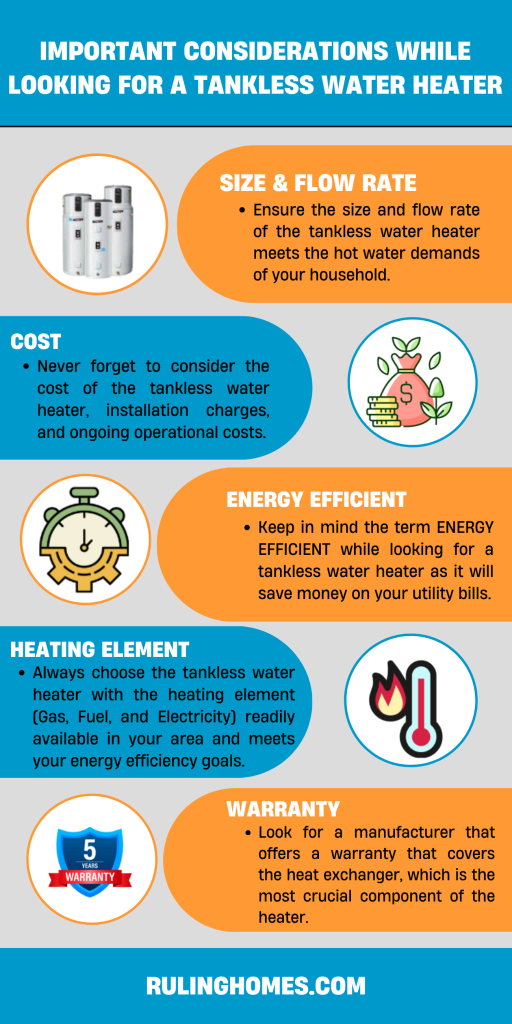The tankless water heater is an upgraded appliance that allows the user to get as much hot water as needed.
We will tell you to step by step procedure of how a tankless water heater works.
Table of Contents
Step 1
When a hot water tap is opened, cold water enters the tankless water heater through the water inlet built into the unit. Cold water enters the tankless heater at a standard pressure of 20-40 PSI, which helps maintain the leakage-free pipelines.
Step 2
Flow sensors detect water flow and activate the gas burner/electricity heating element, which provides constant heating to the flowing water. It heats the water to the desired temperature and allows the user to get a non-stop supply.
Step 3
The heat exchanger of the best tankless water heater, made up of tightly coiled pipes, transfers heat from the burner to the water flowing through the pipes. It constantly heats the water in no time as the water flows through it.
Step 4
Hot water is delivered to the user providing a constant hot water supply.
Step 5
Once the hot water tap is turned off, flow sensors cannot detect the constant movement of water and shut off the gas burner or electric heating element. This helps to save energy and prevent overheating.
Step 6
Finally, the tankless water heater moves into standby mode until the next hot water demand is needed and will start again from step 1.
How many types of tankless water heaters are there in the market?
There are two types of tankless water heaters in the market.
Electric tankless water heater: It uses electricity to heat the water
Gas tankless water heater: It uses natural gas/propane to heat the water.
Important considerations while looking for a tankless water heater
- Ensure the tankless water heater’s size and flow rate meets your household’s hot water demands.
- Keep in mind the term ENERGY EFFICIENT while looking for a tankless water heater, as it will save money on your utility bills.
- Always choose the tankless water heater with the heating element (Gas, Fuel, and Electricity) readily available in your area and meets your energy efficiency goals.
- Place the unit in a secure and adequate space so it must be dealt with a proper ventilation system
- Never forget to consider the cost of the tankless water heater, installation charges, and ongoing operational costs.
- Look for the model whose components are easily available and require lesser maintenance.
- Look for a manufacturer that offers a warranty that covers the heat exchanger, which is the most crucial component of the heater.
Conclusion
A tankless water heater is a reliable and energy-efficient way to provide hot water to your home without needing a storage tank.
By utilizing advanced technology, these heaters can deliver hot water on demand while reducing energy waste, making them a smart investment for many homeowners.
Understanding how they work and their benefits can help determine if a tankless water heater is right for your home and lifestyle.
A tankless water heater can provide endless hot water and cost savings with proper installation, maintenance, and usage.

I grew up on a small farm in New Jersey. We had a big family because my parents, my uncles and aunties all were living together on this farm so, you can imagine, it was always over crowded with people. But living in farm was really great because we had to do everything on our own and I learned so many things from my parents and uncles and aunties and that is where I found my passion for fixing things, whether it is renovating or designing, I was always there. Read more

